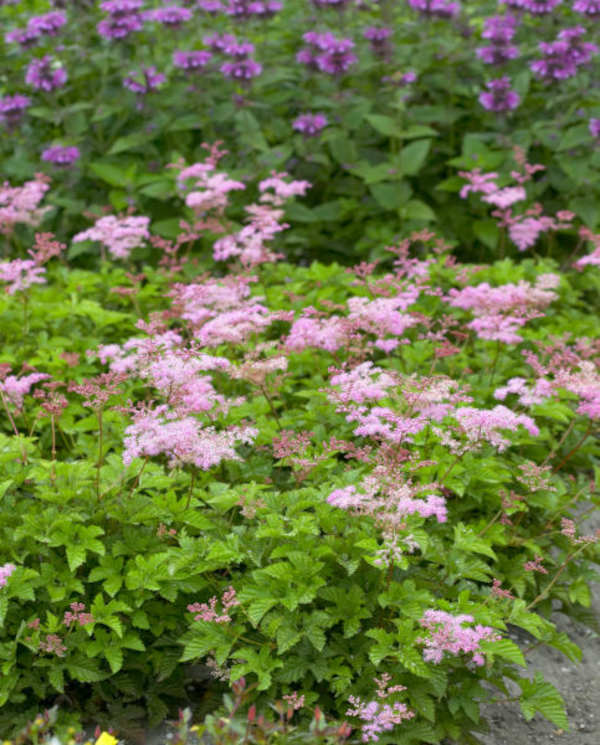How to grow Filipendula
A rhizomatous herbaceous perennial with pinnately divided leaves and large sprays of small rosy-pink or white flowers borne on leafy stems well above the foliage to create a frothy cloud of flowers throughout the summer. The luscious foliage appears in March and is palmate in form – creating verdant, gap-filling interest which lasts through to November. Plants flourish in damp soil, making Filipendula, or meadowsweet, an ideal inclusion in a bog garden or moist border where it will naturalise for more and more plants. Some varieties are mostly grown for foliage although new cultivars are much admired for their pronounced flowers. We supply two pink varieties, Filipendula ‘Kahome’ and Filipendula rubra ‘Venusta’ – the first is a compact 35cm tall specimen, the second a statuesque variety which reaches as tall as 2.5m! Please bear this in mind when choosing a location for your Filipendula.
Other common names for Filipendula are mead wort, queen of the meadow, meadow-wort, meadow queen, dollof, meadsweet and bridewort. The entire herb offers a delightful taste and aroma, with the green components sharing a fragrant quality akin to the flowers. This versatility leads to its use as a strewing herb, enhancing room fragrance with its sweet scent when scattered on floors, as well as adding flavour to wine, beer, and various vinegars. During the 16th century, a practice of adorning floors with rushes and herbs was common to provide warmth and combat odours and infections. Queen Elizabeth I of England favoured this practice and held a particular fondness for this herb, choosing it above all others to adorn her chambers.
The whole plant is a traditional remedy for an acidic stomach and the fresh root is often used homeopathic preparations. Dried, the flowers are used in potpourri. Filipendula also contains the chemicals used to make aspirin and a small section of root, when peeled and crushed smells like Germolene. It is even claimed the chewed the plant is a good natural remedy for relieving headaches - though we cannot vouch for this!

Zantedeschia is a genus of flowering plants from the family Araceae and is native to southern Africa. With a rich history dating back to the Ancient Romans, these deciduous or semi-evergreen perennials have been used as a symbol of celebration. Zantedeschia was Named after Professor Giovanni Zantedeschia, an Italian botanist.
There are two main forms of Zantedeschia: hardy and tender. Hardy forms of the plant can be grown outdoors, enjoy moist soil and full sun or partially shaded conditions - these are known as Arum lilies. Tender forms of Zantedeschia prefer being grown in containers or pots and should be brought inside over the winter - these are known as Calla lilies.
With tuberous flora in all colours from whites, yellows and oranges to deep reds and purples, Zantedeschias are not to be overlooked in any garden, as long as they have sufficient sunlight to grow in.
Ready to learn more about growing Zantedeschia? Read on for all there is to know...

Key Information
Soil pH
Position
Hardiness

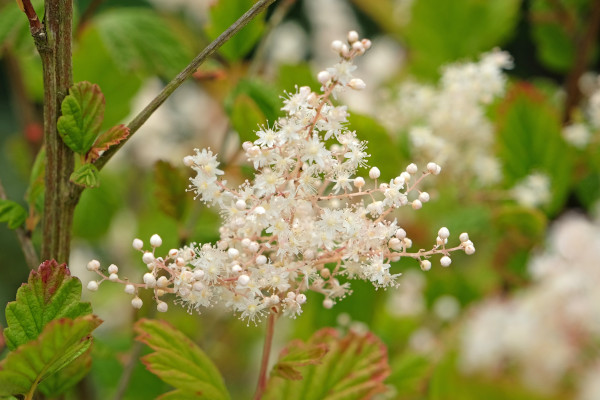
Where & when to plant Filipendula
Position- Sun or shade with any aspect
Soil- Happy in moist to boggy soil of any kind
Flowering Period- Summer
Hardiness- A hardy (H5 and H6) herbaceous perennial
Ideal for gardens with areas of boggy or damp soil, particularly useful for planting at the edge of a stream or pond where flowers will add colourful impact during summer. Plants are hardy enough to cope with temperatures as low as -10°C and beyond so do not necessarily need shelter from the cold. What is more, stems are robust enough to cope with rain and wind throughout spring to late autumn, after which plants die back below ground and return again the following year so a semi-exposed site is also suitable. Plant in spring so that your Filipendula has the opportunity to put down a good root structure over the growing season and acclimatise before the winter cold. Alternatively, plant in autumn before the onset of the colder weather so that young Filipendula are hardened off and have a chance to settle in before winter. Avoid planting in frozen ground or at times of drought.
Prune back spent blooms during the flowering period and cut back to ground level once foliage begins to fade.
How to plant Filipendula
Your Filipendula is best planted directly into the ground.
For planting in the garden, ensure you choose a spot with appropriate levels of sun or shade and suitable moisture levels for your plant.
- dig the soil area removing any large stones and weeds and breaking up any lumps. Mix in some organic matter and/or compost into the soil to give your Filipendula a good start.
- Rake level and firm with your heels. Rake level again.
- Water plants well and allow to drain before planting. A good tip is to dig a hole twice the size of the root-ball.
- Place the plant in the hole, ensuring the top of the root ball sits level with the surface of the soil.
- Backfill with soil and firm in gently with your foot.
- Soak well with water to settle the surrounding ground and keep an eye on moisture levels as your Filipendula establishes.
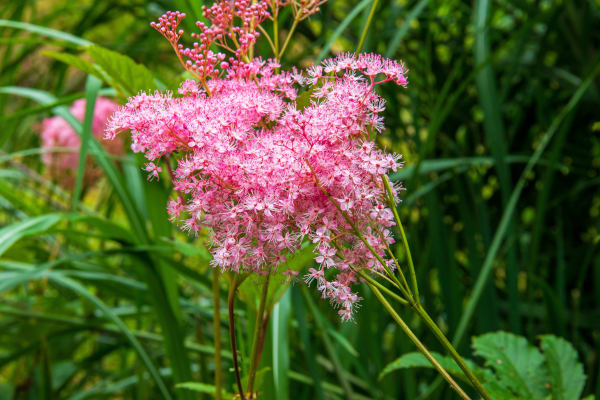
What to plant with Filipendula
Plants are beautiful in their own right yet combine well with other moisture loving plants to create a bog garden or a natural looking damp garden.
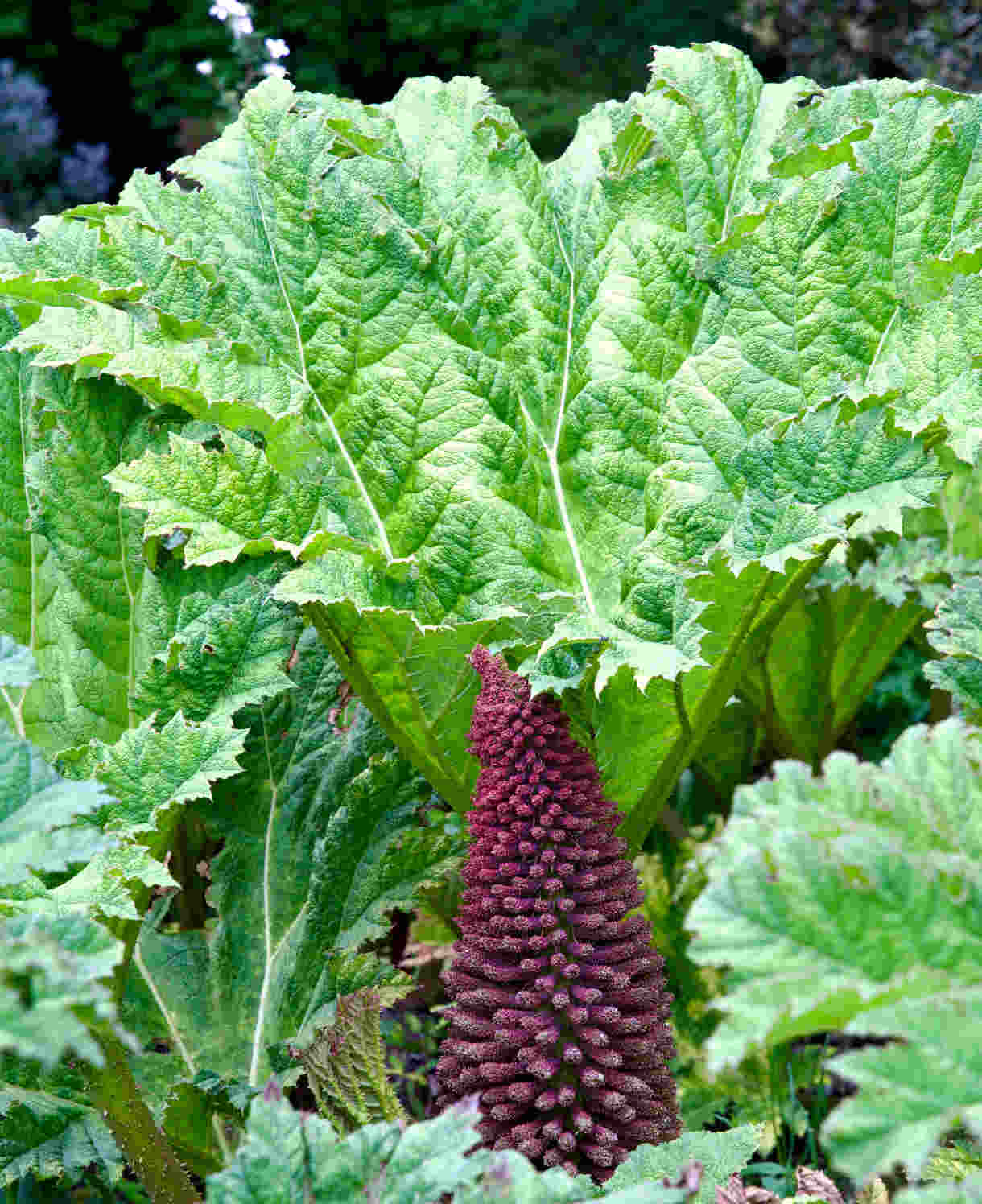
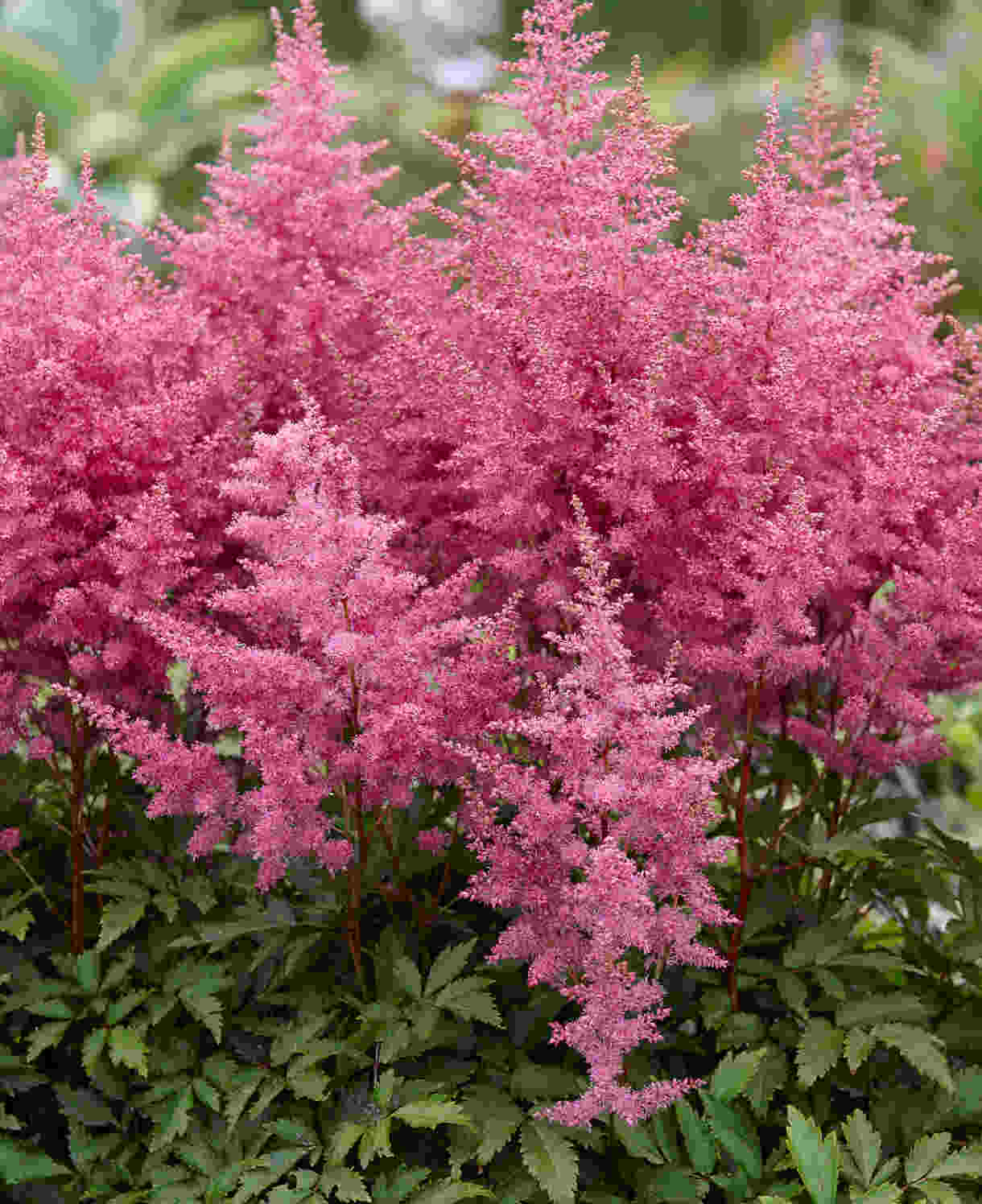

How to care for Filipendula
Pruning
Cut back after flowering or as foliage begins to fade in autumn.
Watering
Ensure moisture levels are good at all times – water generously during dry spells.
Pests and Diseases
Relatively pest and disease free – sometimes susceptible to fungal leaf spots and powdery mildew.
How to propagate Filipendula
This can be done by sowing from seed or by division.
Sowing from seed:
Cut well-developed flowerheads just before the seeds are fully ripe.
Put the whole seed head in a large paper bag, bring indoors and allow the seeds to ripen naturally.
Sow the seeds in spring.
Propagating by division:
The best time for this task is early spring, just as plants are beginning to resprout after a dormant period during colder weather.
Simply dig up and lift a large clump and divide it into several smaller sections.
Replant these smaller sections either into pots for transplanting once established or directly into open ground.
Water well and ensure soil remains moist whilst these divisions establish themselves
* Please be aware that many plants carry Plant Breeders Rights and cannot be propagated for commercial purposes.
Common Filipendula questions
- Is Filipendula easy to grow?
Yes, as long as it is provided appropriate growing conditions this is an easy-going, low maintenance plant.
- Will my Filipendula last?
Plants mature over 2-5 years will live longer than this, propagation will also give you additional stock for planting.
- Which areas of the garden suit my Filipendula best?
Cottage and informal gardens
Low Maintenance gardens
Wildlife gardens
Bog gardens and ponds
